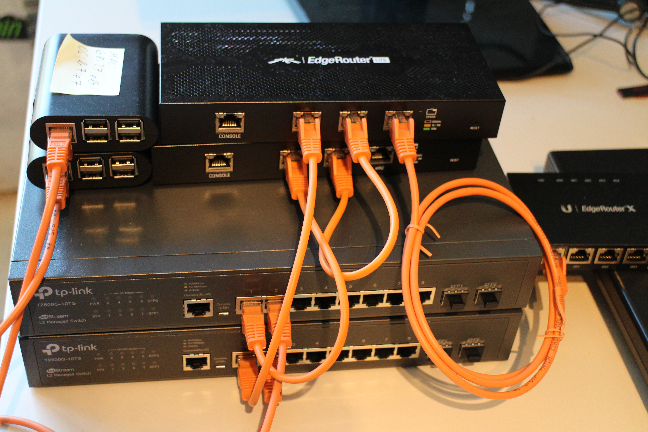Contents
The course Network Security covers the principles and practice of computer and telecommunication network security with particular emphasis on Internet security. After transferring the fundamentals of IT security and cryptography to the networking domain, we follow a top-down approach to network security. Starting with the application layer, the course provides a detailed discussion of network security principles and protocols. In addition to well-known mechanisms, recent developments in the area of network security (e.g., peer-to-peer security, mobile network security, etc.) will be thoroughly examined. Topics are as follows:
- Network security: introduction, motivation, and challenges.
- Fundamentals: a reference model for network security, security standards for networks and the Internet, security threats, attacks, services, and mechanisms
- Cryptographic foundations for networking security: symmetric crypto and its use in networks, public-key crypto and its use in networks, support functions to implement network security
- Application layer security
- Transport layer security
- Network layer security
- Link layer security
- Physical layer security
- Selected topics in network security: security for wireless and mobile networks, resilience, wireless link fairness, IoT security and vulnerability research
- Operational network security: firewalls, intrusion detection systems
Objectives
Students attending the lecture are acquiring knowledge in the domain of communication network security with emphasis on Internet security. Students are able to apply and transfer the most important fundamentals from IT security and cryptography to the field of communication networks.
Students are able to distinguish the most important basic techniques for securing communication networks. They have a thorough understanding of security mechanisms on the different network layers (application layer, transport layer, network layer, link layer, physical layer). As a result, they are able to thoroughly discuss the characteristics and principles in the area of network security and exhibit detailed theoretical and practical knowledge in this field. Additionally, students are able to describe recent developments in the area of network security (e.g., peer-to-peer security, mobile network security, etc.).
The exercise deepens the theoretical foundations by means of exercises, which consist of literature, calculation as well as practical implementation/application examples.
References
During the course, we will study selected chapters from the following books as well as selected journal articles and conference papers:
- [KaPeSp2002] Charlie Kaufman, Radia Perlman, Mike Speciner: Network Security – Private Communication in a Public World, 2nd Edition, Prentice Hall, 2002, ISBN: 978-0-13-046019-6
- [Stallings2013] William Stallings, Network Security Essentials, 5th Edition, Pearson, 2013, ISBN: 978-0-13-337043-0
- [StBr2014] William Stallings, Lawrie Brown, Computer Security: Principles and Practices, 3rd Edition, Pearson, 2014, ISBN: 978-0-13-377392-7
- [BuHu2008] Levente Buttyan, Jean-Pierre Hubaux: Security and Cooperation in Wireless Networks, Cambridge University Press, 2008, ISBN: 978-0-521-87371-0 (also available online for download)
- [Bishop2003] Matt Bishop: Computer Security – Art and Science, Addison Wesley, 2003, ISBN: 978-0-201-44099-7
- [Anderson2008] Ross Anderson: Security Engineering, 2nd Edition, Wiley, 2008, ISBN: 978-0-470-06852-6 (also available online for download)
- [KuRo2009] James F. Kurose, Keith W. Ross: Computer Networking: A Top-Down Approach, 5th Edition, Addison Wesley, 2009, ISBN: 978-0-13-607967-5


